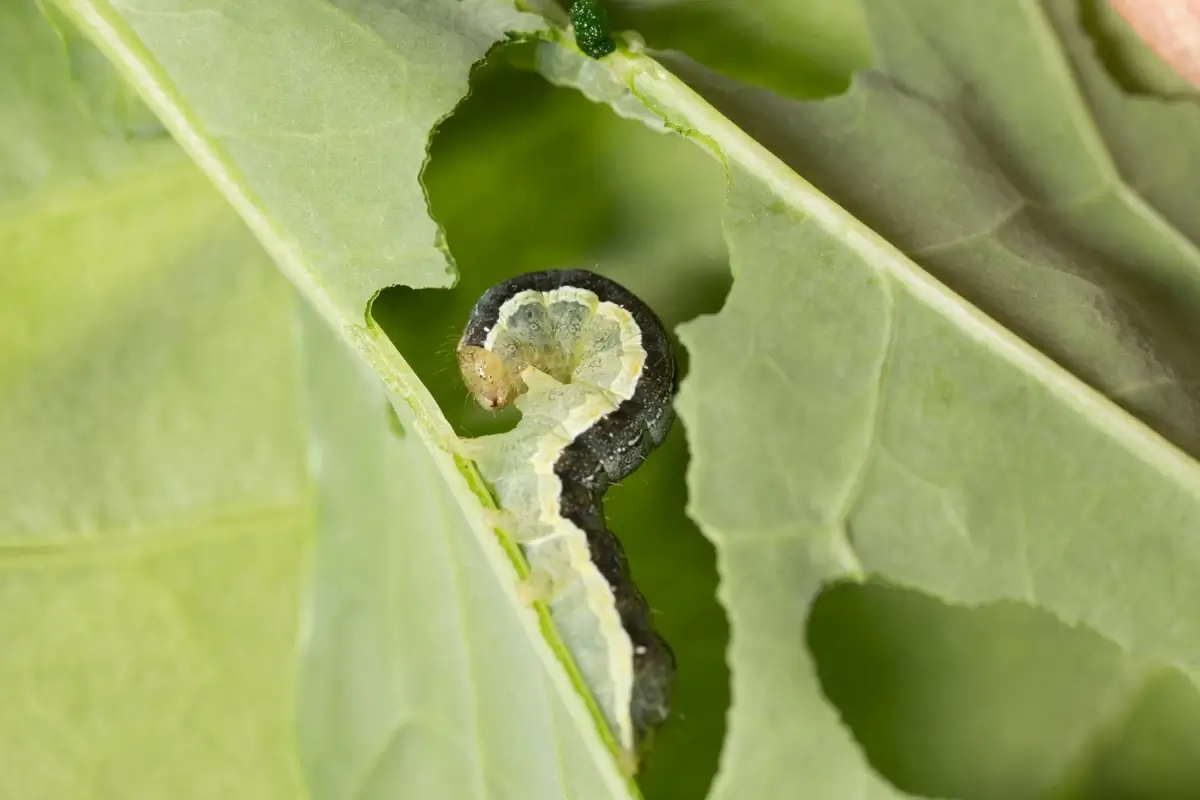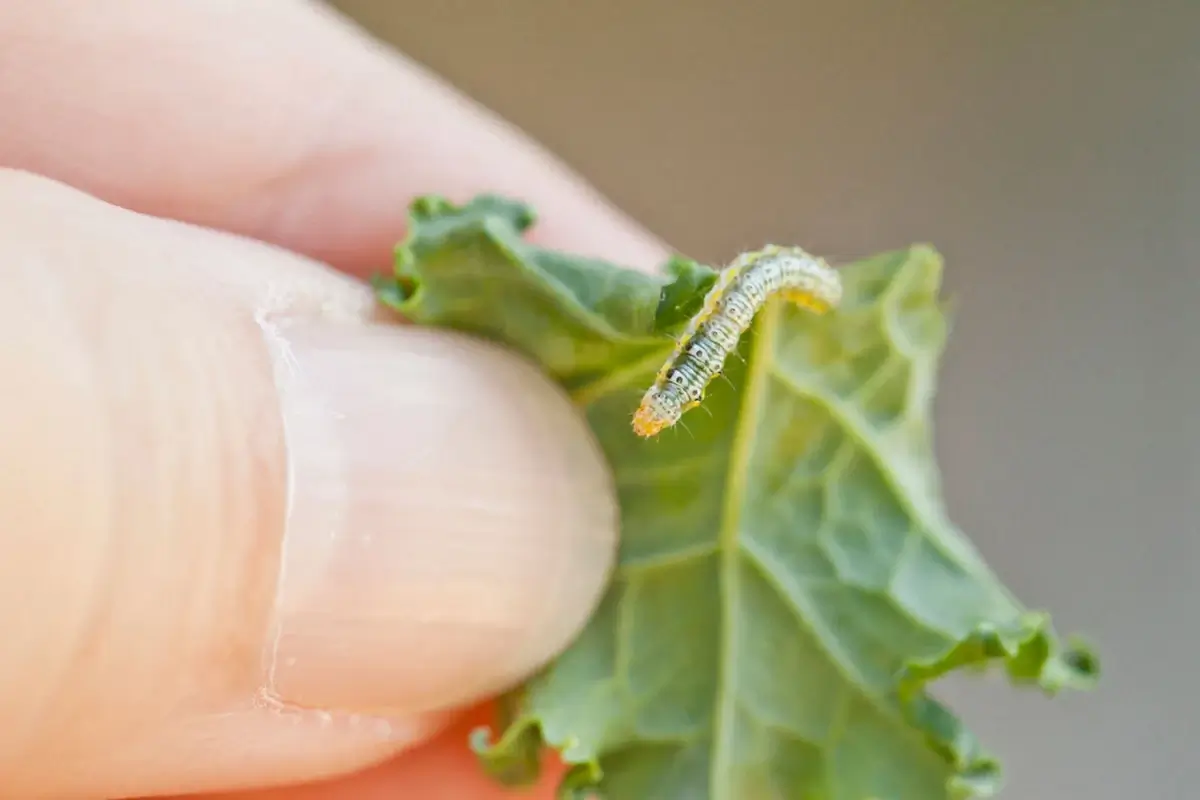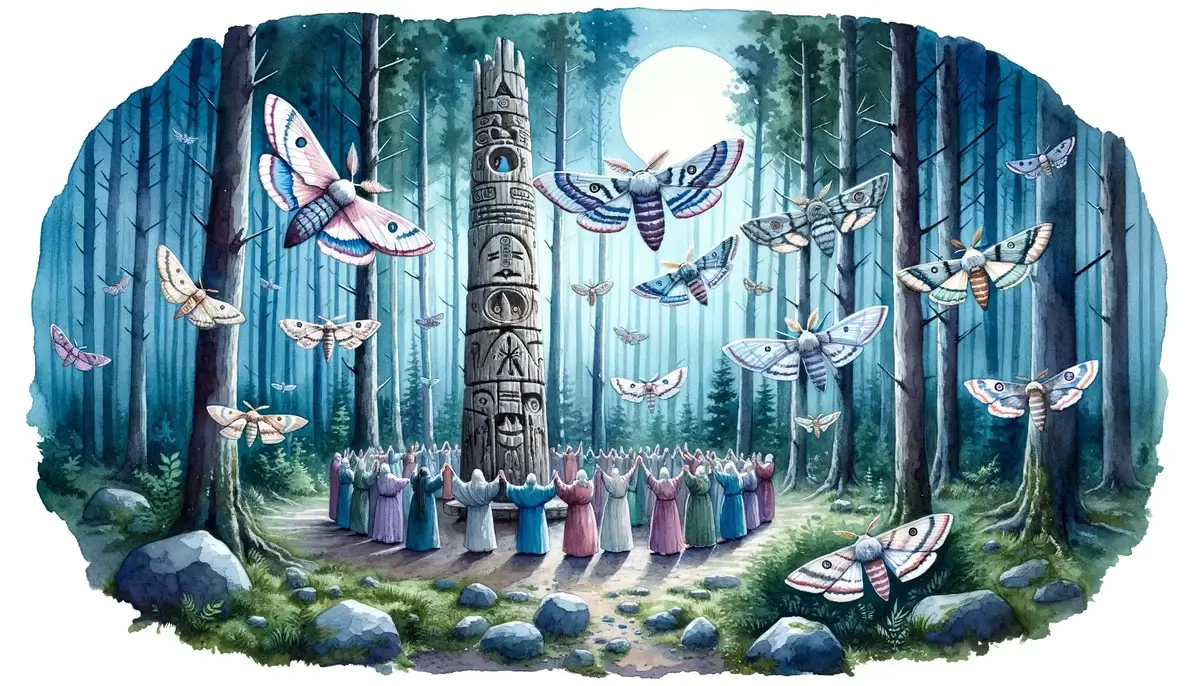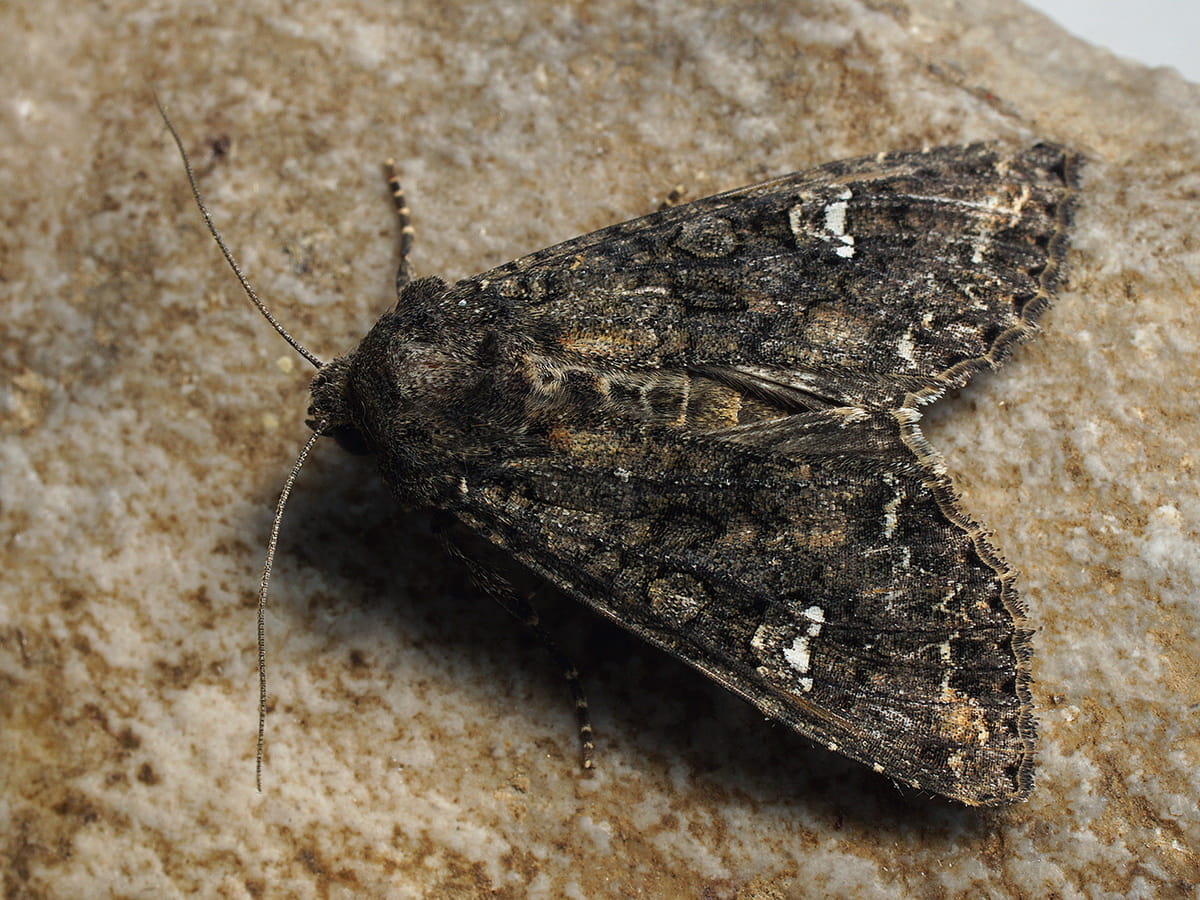The cabbage moth: a tiny wanderer that’s sparked both curiosity and consternation. Did you know they’ve been fluttering around since ancient European civilizations? Researchers have found mentions in texts dating back centuries. While they may be pests in our gardens, these moths have a history and biology that’s bound to surprise you.
From their unexpected kinship with butterflies to caterpillars’ knack for concealment, here are some fun facts about cabbage moth that will give you a new appreciation for these mini marvels.
1. Worldwide Wanderer: Discovering the Cabbage Moth’s Global Reach
The cabbage moth isn’t bound by borders. Originating from Europe, records indicate they’ve been present since the Roman era. Yet, today they’ve expanded to almost every continent! By the 1860s, they were introduced to North America, primarily attributed to European trade and migration. Their adaptability to varied climates, from the mild Mediterranean to North American summers, is a testament to their survival skills.
Thanks to humans, these moths have hopped continents and diversified their palate, not just settling on cabbages but an array of crops, making them one of the most traveled pests in history!
2. Cocoon Chronicles: The Moth’s Chitinous Chamber
The pupal stage of the cabbage moth, often referred to as the ‘cocoon’, is a marvel of biology. But, let’s set things straight: while some insects, like silkworms, produce silk cocoons, the cabbage moth’s pupal casing is more of a rigid, chitinous armor. This structure provides both protection and a supportive framework for the developing moth inside.
Within this protective chamber, the magic of metamorphosis unfolds. It’s not merely about sprouting wings; it involves a complete cellular transformation. Specialized cells known as imaginal discs activate during this phase, evolving into the various body parts of the adult moth.
Amazingly, recent research indicates that moths may retain some learned behaviors from their caterpillar days after metamorphosis. This fascinating discovery challenges our understanding of memory, especially given the significant reorganization that happens within the moth’s brain during its transformation.
3. Green & Brown Camouflage: The Art of Caterpillar Concealment
One of nature’s most captivating artists, the cabbage moth caterpillar, has mastered the art of hiding in plain sight. Their green and brown hues are a result of their diet and evolutionary pressures. Research from the University of Liverpool suggests that caterpillars that feed on more nitrogen-rich plants tend to be greener.
This isn’t just for aesthetic purposes. These colors significantly reduce predation rates. A study in 2015 revealed that birds were 3 times less likely to spot a well-camouflaged caterpillar than their more conspicuous counterparts. Evolution has truly favored the stealthy!

Image: Koppert
4. Decoding “Mamestra brassicae”: Behind the Scientific Name
Ever wonder about the story behind a name? The scientific name for the cabbage moth is Mamestra brassicae. “Mamestra” doesn’t have a clear etymological origin, but “brassicae” is derived from Latin, referring to the Brassicaceae family of plants, which include cabbages. This already tells you about their favorite menu items!
The categorization of species is a careful art, balancing taxonomy and behavior. For the cabbage moth, its name both identifies it and gives a nod to its dietary preferences.
5. Europe’s Winged Prowler: Tracing the Cabbage Moth’s Origins
Europe is not just rich in history and culture; it’s also the cradle for many species, including the cabbage moth. Historical records and studies suggest Mamestra brassicae has been a part of Europe’s ecosystem for countless centuries, making its mark as a predominant nocturnal pest.
The spread of this moth, both naturally and through human-mediated introductions, has shaped the agricultural landscapes of many countries outside its native range.
6. Distinguishing the Night Flyer: Cabbage Moth vs. Cabbage Butterfly
Yes, they might share a penchant for cabbages, but cabbage moths and butterflies are distinct entities. The cabbage moth (Mamestra brassicae) is a true moth from the Noctuidae family and thrives in the nighttime, while the cabbage butterfly (Pieris rapae) is a day-active butterfly from the Pieridae family. Morphological differences, like body size, wing shape, and antennae, set them apart.
So next time you see a fluttering insect near your cabbages, a closer look might reveal if it’s the night-loving moth or its day-dwelling butterfly counterpart.

Image: WTTW and Ben Sale / Flickr
7. Life Cycle Chronicles of Mamestra brassicae: Nature’s Marvel
The life cycle of the cabbage moth, Mamestra brassicae, is a masterclass in nature’s intricacies. It all begins when a female moth lays between 200 to 300 eggs, typically choosing the underside of leaves to ensure safety. These eggs, fascinatingly, hatch within 4-8 days, depending on temperature conditions.
Once emerged, the caterpillars embark on a nocturnal feeding frenzy, often targeting crops like broccoli, cauliflower, and, of course, cabbage. Historically, farmers in the 1800s documented significant crop damage due to these hungry little critters. After about 30 days, these caterpillars spin a cocoon, entering the pupal stage. Here’s where the magic happens: within another 10-20 days, a fully-grown moth emerges, ready to restart the cycle.
Recent studies have emphasized the moth’s adaptability. They’ve evolved to synchronize their life stages with the seasons, ensuring maximum survival rates. This remarkable dance of transformation, historically observed and scientifically studied, gives us a peek into nature’s meticulous planning.
8. Tiny Pests, Mighty Damage: The Havoc They Wreak on Crops
While small, cabbage moths (Mamestra brassicae) pack a punch in terms of crop damage. Their caterpillars have a notorious appetite, especially for brassica crops like cabbage, broccoli, and cauliflower. Studies have shown that these pests cause annual damages amounting to millions in the agricultural sector. Historical records even suggest that during particularly bad infestations, up to 70% of a cabbage crop could be destroyed. Now that’s a destructive munch!
Interestingly, these moths have also been the focus of various agricultural research projects, seeking effective pest control methods without harming the environment.
9. Diverse Diet Delights: Beyond Cabbage – Their Varied Menu
While they’re named for their affinity to cabbages, these moths aren’t just about one green treat. The cabbage moth caterpillars, in their quest for nutrition, devour a variety of crops. They’ve been known to munch on lettuce, spinach, and even some root vegetables! A 1985 research paper highlighted how these pests expanded their menu, adapting to local available crops, showcasing nature’s flexibility.
So, while cabbage might be their favorite, these caterpillars aren’t picky eaters. They’re real gourmands of the garden!

Image: gardeningknowhow.com
10. Heading North: Expansion to the Northern Frontiers
Originally from Europe, the cabbage moth’s geographic range has steadily expanded, particularly heading north. Climate studies indicate that warmer seasons in northern regions, attributed to climate change, have allowed these pests to move further north than ever before. This poses a new challenge for farmers in these areas, previously unaccustomed to dealing with this pest.
It’s a testament to the adaptability of species, but also a stark reminder of the intricate ways climate change affects ecosystems.
11. The Mystery of the Patch: Unlocking the Moth’s Markings
A signature mark of the cabbage moth is its unique patch pattern on its wings. But did you know that these aren’t just for show? Researchers have found that these patterns play a role in mating rituals and even camouflage. A 2012 study highlighted how these markings could confuse predators, making it harder to focus on a single moth in a fluttering group.
The complex world of moth markings is more than just aesthetics; it’s about survival and signaling in their environment.
12. Family Ties: The Larger Moth and Butterfly Clan
The cabbage moth (Mamestra brassicae) is a part of the grand and diverse Lepidoptera order, a family that boasts about 180,000 species of both moths and butterflies. While moths often play second fiddle to their more colorful butterfly relatives in the public’s imagination, they contribute immensely to the ecological balance.
Fun fact: did you know moths outnumber butterflies roughly 9 to 1 in the Lepidoptera family? This vast family has been a subject of fascination, from ancient silk-producing moths in China to iconic butterflies symbolizing transformation.
13. Seasons of the Moth: Their Annual Appearances and Disappearances
Ever wonder where cabbage moths go during certain times of the year? Like many of their Lepidopteran cousins, these moths have specific life cycle stages synced with the seasons.
In spring, as temperatures rise, they emerge, lay eggs, and by summer, their ravenous larvae start feasting. As winter approaches, the cycle slows, with many entering a kind of insect hibernation or diapause. Their seasonal cycle is a dance choreographed with nature’s rhythms, ensuring their survival year after year.
14. Larvae Legends & Tales: Myths Surrounding These Critters
Throughout history, many cultures revered or feared the moth and its larvae, weaving tales around them. While the cabbage moth might seem ordinary, in some cultures, moths were considered souls of the departed or omens of change.
There’s even a Hungarian folktale suggesting that moths were originally created from ink, explaining their nocturnal habits! Although the cabbage moth specifically might not star in these tales, it’s a part of this rich mythical tapestry.

Image: iFunFact
15. Order Up!: Where Cabbage Moths Fit in Nature’s Ladder
In the grand scheme of nature, the cabbage moth has its unique spot. Belonging to the Noctuidae family and Lepidoptera order, they play a pivotal role in the food web. Serving as prey for various birds, bats, and spiders, they contribute to the balance. Moreover, their larvae, while pesky for farmers, help in breaking down plant matter, aiding in decomposition.
It’s a reminder that every creature, no matter how seemingly insignificant, has a part in the intricate web of life.
FAQ
What is the purpose of cabbage moths?
Everything in nature has a purpose, including the often-misunderstood cabbage moth. These moths play a crucial role in the ecosystem. Firstly, they serve as a food source for various predators like birds, bats, and even some spiders. Their larvae, the caterpillars, help in the decomposition process by feeding on cabbage and other plants, breaking down plant matter into simpler compounds. This might seem damaging from a gardener’s perspective, but in natural ecosystems, it ensures nutrient recycling and a balance of plant populations.
Do cabbage moths fly at night?
Yes, they do! Cabbage moths, like many of their moth relatives, are nocturnal. They are most active during the night, which is when they go about their essential activities such as seeking mates and laying eggs. Their night-time habits also help them evade many daytime predators, optimizing their chances of survival.
What attracts cabbage moths?
Several things can attract cabbage moths. The most obvious is their primary food source: plants from the cabbage family. They’re specifically drawn to plants emitting a mustard oil smell, which includes cabbage, broccoli, and cauliflower. Female moths are also attracted to areas where they can safely lay their eggs – the undersides of leaves are a favorite. Additionally, like many insects, they can be attracted to lights at night.
How long are cabbage moths active?
The activity of cabbage moths largely depends on the season and local climatic conditions. Typically, they have a life cycle that spans a few weeks, but their active adult life, where they fly around, mate, and lay eggs, can be relatively short – often just a week to ten days. However, in regions with warmer climates and in favorable conditions, multiple generations of cabbage moths can be active throughout the spring, summer, and early autumn months.
Do cabbage moths fly during the day?
While cabbage moths are primarily nocturnal, they aren’t strictly bound to night-time activities. They can occasionally be seen flying during the day, especially in the early morning or late afternoon. However, peak activity and most of their essential behaviors like mating and egg-laying predominantly occur at night.
What are the effects of the cabbage moth?
The cabbage moth, particularly its larvae, can have significant effects on crops. The caterpillars are voracious feeders and can cause extensive damage to a range of plants, especially those in the cabbage family. This feeding can lead to decreased yields and make crops unsellable due to the cosmetic damage. On the flip side, in natural ecosystems, they’re part of the food chain and are prey for a range of animals. Their presence, like all organisms, contributes to the intricate web of biodiversity and ecological balance.





